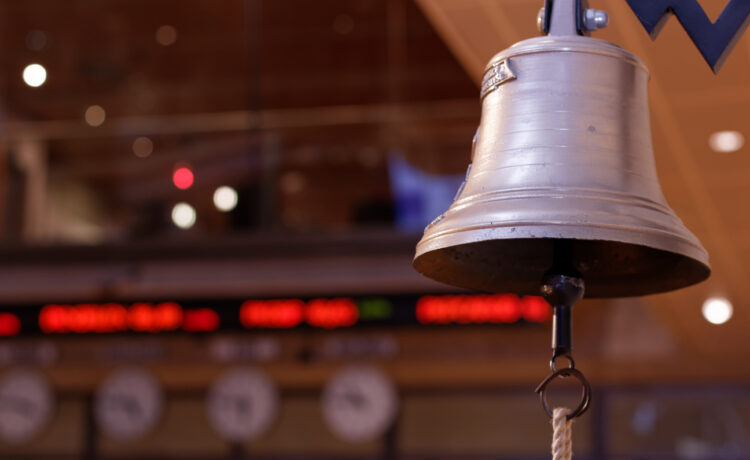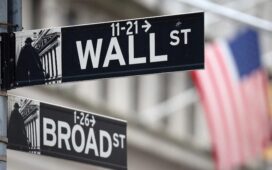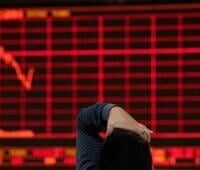The stock market operates on a structured schedule, with set trading hours and designated holidays when markets are closed. This schedule ensures that investors and traders worldwide have a consistent and predictable framework for buying and selling securities. However, deviations from this routine, such as unplanned closures due to significant events or emergencies, can create uncertainty. Understanding the stock market’s operational calendar, including holidays and potential disruptions, is crucial for traders to strategize effectively and capitalize on opportunities while avoiding unnecessary risks.
Knowing when the market is open or closed can significantly impact trading decisions, particularly for those employing time-sensitive strategies. For instance, markets often experience heightened activity leading up to holidays or major events, creating unique opportunities for savvy traders. Conversely, unplanned disruptions can lead to volatility and affect liquidity, requiring quick adjustments to mitigate potential losses. By staying informed about the stock market schedule, traders can better plan their activities, optimize their timing, and maintain preparedness for unexpected developments.
What is the Normal Stock Market Schedule?
The standard stock market schedule refers to the standard operating hours during which stock exchanges are open for trading. In the United States, the two primary exchanges— the New York Stock Exchange (NYSE) and the Nasdaq—follow the same schedule. Regular trading hours are from 9:30 AM to 4:00 PM Eastern Time (ET), Monday through Friday. These hours are consistent across most trading days, allowing traders and investors to execute their transactions within this time frame.
Across U.S. time zones, the stock market is open Monday–Friday during the hours of:
-
Eastern Time (ET): 9:30 AM – 4:00 PM
-
Central Time (CT): 8:30 AM – 3:00 PM
-
Mountain Time (MT): 7:30 AM – 2:00 PM
-
Pacific Time (PT): 6:30 AM – 1:00 PM
-
Alaska Time (AKT): 5:30 AM to 12:00 PM
-
Hawaii-Aleutian Time (HT): 3:30 AM – 10:00 AM
In addition to regular trading hours, there are pre-market and after-hours trading sessions that extend trading opportunities for investors. The pre-market session typically runs from 4:00 AM to 9:30 AM ET, while the after-hours session operates from 4:00 PM to 8:00 PM ET. While these extended sessions offer added flexibility, they generally have lower liquidity and higher volatility compared to regular trading hours.
It’s important to note that the stock market is closed on weekends and observes specific holidays throughout the year, such as New Year’s Day, Independence Day, Thanksgiving, and Christmas. On the day before certain holidays, the market may close early, usually at 1:00 PM ET. Understanding this schedule is essential for traders to time their trades effectively and avoid placing orders during non-trading hours.
What is the Normal After-Hours Trading Stock Market Schedule?
After-hours trading occurs outside the regular trading hours of 9:30 AM to 4:00 PM ET for major U.S. stock exchanges. Typically, after-hours trading begins at 4:00 PM ET and lasts until 8:00 PM ET. It is conducted through electronic communication networks (ECNs), allowing traders to place orders during this extended trading window.
What is the Normal Pre-Market Trading Stock Market Schedule?
Premarket trading typically occurs from 4:00 AM to 9:30 AM Eastern Time (ET) on days when the stock market is open. This time frame allows investors to place trades before the standard market hours begin at 9:30 AM ET. The exact premarket hours may vary slightly depending on the broker or trading platform, so it’s always a good idea to check with your specific brokerage.
What Happens if You Trade Outside of Market Hours?
If you try to trade when the market is closed, your order will not be executed immediately. Instead, the order will typically be queued until the next trading session when the market reopens. For example, if you place a trade after standard trading hours (9:30 AM to 4:00 PM ET), your order will sit idle until the next available trading session, unless your broker offers access to premarket or after-hours trading.
In cases where premarket or after-hours trading is available, your order may still be executed, but it will be subject to different rules and conditions. Trading during these extended hours often involves lower trading volume, which can lead to wider bid-ask spreads and increased price volatility. This can make it harder to get your order filled at the desired price, and it may result in higher transaction costs. Additionally, not all securities are available for trading outside regular hours, so your options may be limited.
For traders who are unaware of the timing, attempting to trade during market closures can lead to frustration and missed opportunities. It’s important to understand your broker’s policies regarding after-hours trading, as well as the risks associated with it. Furthermore, some events, like market holidays or unplanned closures, can delay the execution of orders even longer, making it crucial to double-check the market calendar and stay updated on potential disruptions.
To avoid these issues, traders should be mindful of the market’s operating schedule and any extended trading options provided by their broker. Planning ahead and placing trades during regular hours or understanding the dynamics of after-hours trading can help ensure that orders are executed efficiently and at a favorable price.
What About Bonds? What is the Normal Bond Market Schedule?
The normal bond market schedule in the United States follows standard hours set by the Financial Industry Regulatory Authority (FINRA) for most fixed-income securities. Typically, the bond market operates from 8:00 AM to 5:00 PM Eastern Time (ET), Monday through Friday. These hours encompass trading for a variety of bonds, including U.S. Treasuries, corporate bonds, municipal bonds, and mortgage-backed securities. While the stock market has more rigid opening and closing times, the bond market allows for slightly more flexibility, especially in the over-the-counter (OTC) market.
It’s important to note that the bond market closes early on certain days, such as the day before major holidays, with trading usually ending at 2:00 PM ET. Holidays when the bond market is fully closed align closely with those of the stock market, such as New Year’s Day, Thanksgiving, and Christmas. Understanding these nuances is vital for investors, as early closures can affect liquidity and pricing dynamics.
By adhering to the bond market schedule, traders and investors can ensure that their transactions occur during times of optimal liquidity and efficiency. Being aware of normal hours and holiday adjustments helps in planning trades, rebalancing portfolios, and avoiding potential complications that arise from low-volume periods.
Is the Stock Market Open or Closed on U.S. Holidays?
Understanding the nuances in the stock market’s holiday schedule allows traders to better plan their activities and adjust strategies around market closures or anticipated periods of reduced trading volume.
The stock market is closed on most U.S. federal holidays to allow traders and market participants time to observe these significant days. The New York Stock Exchange (NYSE) and Nasdaq remain closed for the following holidays:
-
New Year’s Day (January 1)
-
Martin Luther King Jr. Day (Third Monday in January)
-
Presidents’ Day (Third Monday in February)
-
Good Friday (Friday before Easter Sunday)
-
Memorial Day (Last Monday in May)
-
Independence Day (July 4)
-
Labor Day (First Monday in September)
-
Thanksgiving Day (Fourth Thursday in November)
-
Christmas Day (December 25)
When these holidays fall on a weekend, the market adjusts its closure. If the holiday is on a Saturday, the market typically closes the preceding Friday. If it falls on a Sunday, the market often closes the following Monday. Additionally, the market may close early (usually at 1:00 PM ET) on the day before certain holidays, such as Thanksgiving, Christmas, and Independence Day.
Please note that after-hours and premarket trading is impacted by trading holidays. If the stock market is closed for a holiday, premarket and after-hours trading is typically unavailable on those dates. Additionally, the trading schedule may be shortened on the day before a holiday, affecting premarket, regular, and after-hours trading sessions. Traders should consult their brokerage’s holiday schedule to ensure they’re aware of any deviations.
What is the Stock Market Holiday Schedule for 2025?
The U.S. stock market is closed for the following holidays in 2025:
-
New Years Day (Wednesday, January 1)
-
National Day of Mourning (Thursday, January 9)
-
Martin Luther King, Jr. Day (Monday, January 20)
-
President’s Day (Monday, February 17)
-
Good Friday (Friday, April 18)
-
Memorial Day (Monday, May 26)
-
Juneteenth National Independence Day (Thursday, June 19)
-
Independence Day or 4th of July (Friday, July 4)
-
Labor Day (Monday, September 1)
-
Thanksgiving Day (Thursday, November 27)
-
Christmas Day (Thursday, December 25)
Stock Market Half-Days (Open from 9:30 AM – 1PM ET):
-
The Thursday before Independence Day (Thursday, July 3)
-
Day after Thanksgiving Day (Friday, November 28)
-
Christmas Eve (Wednesday, December 24)
What Federal Holidays Does the Stock Market Not Close For?
Surprisingly, the stock market remains open during some federal holidays. For example, the market does not close on Columbus Day (Indigenous Peoples’ Day) or Veterans Day. The primary reason for staying open on these days is that they are not considered major market-moving holidays, and financial institutions, including banks, often operate as usual. As a result, trading activity can continue without significant disruption.
Are There Holidays the Stock Market Used to Close For But Does Not Anymore?
Historically, the stock market closed for some holidays that it no longer observes. For instance, the market previously closed on Easter Monday and Decoration Day, the predecessor to Memorial Day, but these closures were phased out as trading volume and the need for consistency grew. Over time, the schedule has evolved to balance the needs of financial institutions, investors, and the global nature of modern markets.
What Could Cause the Market to Close Other Than Scheduled Holidays?
Unplanned stock market closures typically occur due to significant events that disrupt the normal functioning of the financial system or pose a risk to market participants. These events can include natural disasters, geopolitical crises, technical failures, or major national emergencies. In such cases, regulators and exchange authorities may decide to close markets to maintain fairness, protect investors, and prevent excessive volatility.
One of the most notable unplanned closures occurred after the September 11, 2001, terrorist attacks. The New York Stock Exchange (NYSE) and NASDAQ were closed for four trading days as the nation grappled with the tragic events and the financial system needed time to stabilize. Similarly, in 2012, Hurricane Sandy caused an unprecedented two-day shutdown of U.S. stock markets, as severe weather conditions made it unsafe for trading to continue and posed challenges for operational infrastructure in New York City.
Technical failures have also led to temporary unplanned closures. For instance, in July 2015, a technical glitch forced the NYSE to halt trading for several hours, though markets resumed normal operations later that day. Other instances include cybersecurity threats or major power outages that disrupt trading platforms or data feeds. In such cases, contingency plans are implemented to ensure an orderly resumption of market activity.
These historical examples underscore the importance of preparedness for unexpected events. Traders and investors should monitor news and announcements from regulatory bodies like the U.S. Securities and Exchange Commission (SEC) or exchanges like the NYSE to stay informed about potential disruptions and their implications for trading.
When Have Unplanned Stock Market Closures Occurred?
Unplanned stock market closures in the United States have occurred at several key moments in history, often in response to significant events that disrupted normal market operations. Below are some notable instances:
- The Panic of 1873: The New York Stock Exchange (NYSE) closed for 10 days starting on September 20, 1873, due to a financial crisis triggered by the collapse of the Jay Cooke & Company bank. The closure was intended to prevent further panic and stabilize the financial system.
- The Panic of 1914: On July 31, 1914, the NYSE shut down to avoid massive selloffs as World War I broke out in Europe. The market remained closed for nearly four months, reopening in December 1914, the longest closure in U.S. stock market history.
- The Great Depression in 1933: In March 1933, during the height of the Great Depression, President Franklin D. Roosevelt declared a bank holiday to address the banking crisis. The NYSE closed for several days, part of a broader effort to restore confidence in the financial system.
- The Kennedy Assassination in 1963: Following the assassination of President John F. Kennedy on November 22, 1963, the NYSE closed early and remained closed the following day as the nation mourned.
- September 11, 2001 Terrorist Attacks: In the wake of the September 11 attacks, the NYSE and NASDAQ closed for four trading days, from September 11 to September 14, 2001, marking the longest unplanned closure since 1914. The decision was made to ensure safety and allow time for the financial system to recover.
- Hurricane Sandy in 2012: In October 2012, Hurricane Sandy forced a two-day closure of the NYSE and NASDAQ, the first weather-related shutdown since 1888. The storm’s impact on New York City made trading operations unsafe and logistically challenging.
- 2020 COVID-19 Volatility Breaks: While markets remained operational during the COVID-19 pandemic, there were multiple instances of automatic “circuit breakers” halting trading temporarily due to extreme volatility. These were not full closures but highlight the mechanisms in place to manage unplanned disruptions.
These closures reflect the complex interplay of economic, social, and technical factors that can lead to market disruptions, emphasizing the importance of resilient systems and effective contingency planning.
What is a Stock Market Circuit Breaker and How Do They Work to Close the Markets?
Market circuit breakers are safeguards designed to temporarily halt trading during periods of extreme volatility to maintain order and prevent panic-selling. They are triggered when major stock indices, like the S&P 500, experience sharp price declines within a single trading session.
Key Levels:
-
Level 1 (7% decline): A 15-minute halt unless it occurs after 3:25 PM ET, in which case trading continues.
-
Level 2 (13% decline): A 15-minute halt, also not triggered after 3:25 PM ET.
-
Level 3 (20% decline): Trading is suspended for the remainder of the day, regardless of the time it occurs.
These mechanisms apply to regular market hours and aim to provide a “cooling-off” period for traders to reassess and stabilize activity during turbulent conditions. Circuit breakers are a critical tool in promoting market resilience and investor confidence.
For a full overview of Market Circuit Breakers, please review Stock Market Circuit Breakers: What You Need to Know.
In Conclusion
Understanding the stock market schedule, including regular trading hours, holidays, and potential disruptions, is a cornerstone of successful trading. By being aware of when the markets are open and the factors that can affect trading activity, traders can make informed decisions, align their strategies with market conditions, and avoid unnecessary surprises. Whether it’s leveraging premarket activity to gain a competitive edge or adjusting plans for holidays and unplanned closures, having a clear grasp of the schedule helps traders maintain control and adaptability in an ever-changing financial landscape.
Ultimately, the ability to anticipate and respond to market timing is a skill that distinguishes prepared traders from reactive ones. Knowledge of the trading calendar empowers investors to optimize entry and exit points, capitalize on unique opportunities, and manage risks effectively. Staying informed about market schedules and potential disruptions ensures that traders are not only prepared but also strategically positioned to navigate both routine and unexpected market dynamics with confidence.





